History originally published in AutoWeek December 31, 1984
Henry Payne’s Lincolnesque frame slouches in the fiberglass driver’s seat, the steering wheel down between his knees, his big hands on either side of the wood-rimmed circle. It’s odd that he should look-– or even be – so comfortable in the 904’s small and Spartan cockpit.
Outside the car he’s the ramrod straight six-foot-five namesake, founder, and Man With The Corner Office of Payne Engineering, manufacturer of electronic control systems in Scott Depot, West Virginia. He tucks his tie neatly into his shirt and speaks softly and carefully, as if calibrating each word for precise fit. Now inside the car, as the air-cooled six idles a mere thickness of fiberglass behind us, Payne is expounding on his theory of the sporting automobile:
“The basic principles for any car (are that it) had better way less than 3,000 pounds and really shouldn’t have more than 3.5 liters (of) engine,” he says. “And when you look at a sports car or personal car, the rules (are) 2,000 pounds, three liters max. You get it over three leaders, and you won’t build to get it under 2,000 pounds. Those are some basic rules we’ve used over the years, and the 904 is the best example of those rules.”
The “904” in question is, of course, a Porsche 904. Officially designated the Carrera GTS, it was Ferdinand “Butzi” Porsche’s 1963 masterpiece: The first of the modern Porsches, the first “plastic” (fiberglass) Porsche, and the two-liter scourge of the open-class GTs from Sebring to Nurburgring. More specifically, however, the topic is Henry Payne’s 100,000-mile 904, a 911S-motored hill climb record-holder, vintage racer, and all-around nifty road car.
But first, a little history. Porsche, in addition to the ubiquitous 356 sports car, produced a series of racers. Starting with the 550 Spider of 1953, the line was developed through a series of sports racers and formula cars, all using the four-cam flat four culminating in the 904. The 904, however, makes this group only by default. It had been designed for the new generation six, but was released with the four because, depending on whom you believe, the six wasn’t completely debugged or Porsches racing customers were more comfortable with the tried and relatively true four.
Other than the four, the 904 is dissimilar to its predecessors. Where the earlier cars had space frames and primarily aluminum body work, the chassis of the 904 was comprised of rectangular-section welded steel frame rails to which the fiberglass body was directly bonded. Though this would later lead to severe rust problems for road driven 904’s and was difficult to repair after a shunt, the immediate result was an anything but flimsy chassis and also a saving of some 300 pounds. In fact, the entire frame/body weight only about 320 pounds.
The suspension, however, was derived from Porsches formula cars, with unequal length wishbones and coil-over shocks at either end. Four-wheel disc brakes – a first for Porsche – were standard 911 units, though with larger diameter discs. The five-speed transmission designed for use with the six did make it into the 904, mounted aft of the axle line and connected to the hubs via halfshafts with unusual length-compensating double yoke universal joints.
The two-liter four lived ahead of the rear axle and was the ultimate expression of the four-cam fours, producing 158/180 HP in street/race trim respectively, with dual ignition and twin Weber 46IDM (or Solex 44 PII-4) carbs in either version.
Inside, the 904 featured fixed seats with pedals and steering wheel adjustable for reach. Typical of GT racers of the era, the accommodations were anything but grand: Bare fiberglass was the norm, side windows were sliding plexiglass, and weather sealing was minimal at best.
No matter. Porsche easily sold enough cars to meet the 100-car production homologation requirement; 102 orders were in by the beginning of 1964, and many more than the approximately 110 produced could have been sold.
The 904 was simply a prodigious performer, winning the two-liter class at Sebring in 1964 – the first time out – and winning the Targa Florio outright several weeks later. Successes followed at the Nurburgring, Reims (where a brand-new 904 was driven from the factory to the track to win the two-liter class), Spa and Zolder. In January 1965, in one of the snowiest Monte Carlo Rallies ever, Eugen Bohringer slid a 904 home in second overall.
Snow-covered victories or not, the 904 had limitations for those who would use it as a road car. Payne knows all too well. He acquired his pale-yellow 904 from its original owner in 1966 and put 35,000 miles on it over the next three years, using it every day, winter and summer, for pleasure and for work. It was his only car.
Still, lament’s Payne, “you just couldn’t put any miles on the thing.” Valves would tulip every 2,000 miles, requiring frequent adjustment, and 150 miles of driving would consume a quart of oil – and that’s with the engine in good condition. “Everyone could tell when I was going to work because they could smell me,” smiles Payne. “I was using Castrol oil.”
The solution was to replace the troublesome four with a 2.4-liter six, “basically a 911S engine.” It was a straightforward swap: All air-cooled Porsches use the basic VW bellhousing bolt pattern, and the fit was perfect, the two extra cylinders right at home in the space designed for them. Only a few minor brackets needed changing, and that weight went up only about 100 pounds, and that in the middle of the car. “It just transformed the car. With that, I really started driving it.”
Payne logged about 60,000 miles on that engine before replacing it with another, slightly larger 911 mill. With a 911S cam and fuel injection, horsepower is an estimated 250. At 150 mph says Payne, you still have half the throttle left. Top end? “I guess,” he says, “something like 185.” Zero to 100? “Nine-point-five seconds.”
And being a Porsche, it’s not all straight-line speed. On his skidpad (there is also a small racetrack and hill climb circuit on the hilly Payne Engineering campus), Payne has measured lateral acceleration of 0.94G on Pirelli CN-35 tires, and on race rubber he’s recorded a best of 1.25G.
If the numbers are impressive to read, they’re yet more so to drive. At 60 in fifth with the engine lumping along barely above idle, rolling the throttle on brings a steady surge that becomes a rocket ride, the acceleration climbing is the engine comes ever more onto cam. Before there’s a chance to realize it, the figure on the speedometer has doubled, the cars that were around us of disappeared in the mirrors, and I’m awfully glad there’s an Escort on the dash.
The steering wheel seems large, but the feeling is crisp and direct and lane changes are made as if with a toggle switch. The driving position is semi-recumbent and the pedals close together: The throttle is stiff, the clutch quick but hardly savage, and the brake pedal is hard but really erases speed. At 100, is hard to believe the car is going that fast, the only clues being the speedometer, wind noise and intake drone – and though the last is there all the time, it’s never enough to make conversation impossible.
Best of all, it works. Payne holds the absolute record for the Coonskin Climb (Charleston, West Virginia) and Wintergreen Hill climbs and A-modified at Chimney cap rock and Bellefontaine. In vintage races, Payne runs away from suddenly huge Corvettes, Shelby Mustangs, and other pavement-punishing V-8s. To top it off, he always drives the 904 to all events.
In fact, the only quarrel one might have with the car is its lack of “authenticity,” sans the OE four. Not so. Cars kept as factory racers were run with formula car eights, and some ten had the 901/20 6-cylinder as well as the two-liter four. Better yet, an article detailing the swap was published in Christophorus, the Porsche house organ. If, for having a nonstock engine, it’s a bastard, it’s one that has done well. Payne just says, “don’t call it a conversion.”
No problem. We’ll just call it fantastic.










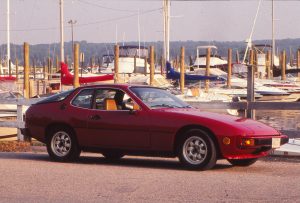
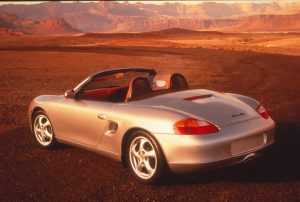
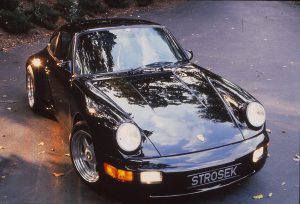

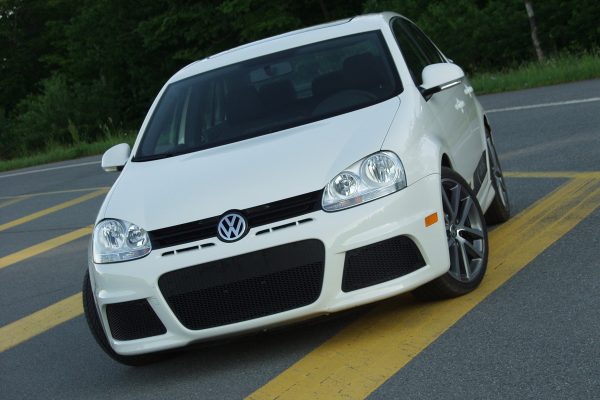
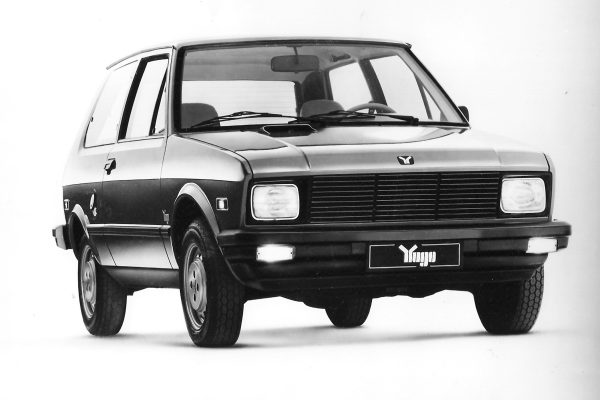
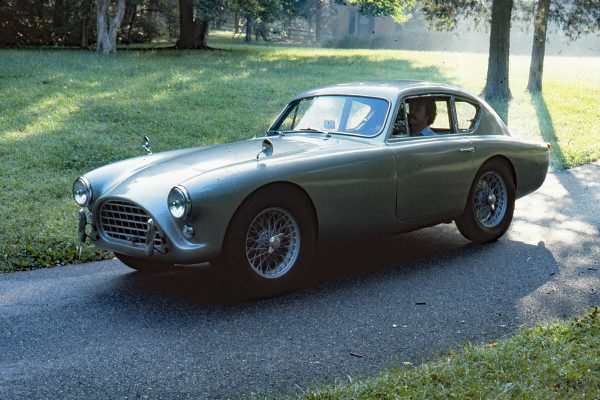
a beauty from the pre computer days of driving by the grace of your abilities rather than the electronic nannies keeping the direction sane…
more than just a car but a dynamic realization of sport and engineering beauty…